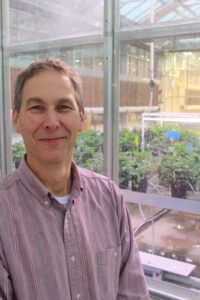Jun 7, 2023
OSU researchers probing new world of biostimulant regulation
Biostimulants have long been unregulated inputs in the U.S. Some individuals and groups pushed for change and more rigor in grower- friendly documentation.
That effort took a big step forward in the 2018 Farm Bill, which initiated a formal process for determining if, how, and by whom biostimulants should be regulated in their march to market.
“As many have said and written, the bill contained the first legal/statutory language about plant biostimulants of any law in the U.S.,” said Matt Kleinhenz, Extension specialist at Ohio State University (OSU)’s Department of Horticulture and Crop Science. “It kickstarted a process ultimately aimed at improving farmers’ experiences with plant biostimulants.”

The Biological Industry Alliance at BPIA.org is a good resource to track new developments.
“A new era has opened up,” Kleinhenz said.
Kleinhenz and his team at OSU used USDA SARE (Sustainable Agriculture Research and Education) funding to do some of the early research on biostimulants.
There are hundreds of biostimulants on the market and they fall into various categories, mostly depending on their origin or what they contain.
Symbiotic bacteria, symbiotic fungi, and humic and fulvic acids derived from compost are examples of biostimulants. Seaweed extracts are used as biostimulants. Protein hydrolysates, which are peptides or amino acids derived from plant or animal products, are also examples of biostimulants.
The definitions and properties of biostimulants frequently overlap.
Biostimulants listed by OMRI (Organic Materials Review Institute) for use in organic production are also widely used in conventional agriculture, in specialty crops and field crops.
Some biostimulants are advertised as products to increase yield and improve crop quality. Others are touted to reduce susceptibility to disease and enable plants to better tolerate other sources of plant stress.
The key to selecting a biostimulant?
“Know what the product is and what the desired effect is,” Kleinhenz said.
Is the goal to improve the greenness of a vegetable crop for improved visible appearance or to increase a field crop’s total marketable yield?
Expect the results to be subtle and assessing a product’s performance is challenging, and plan to make multiple points of evaluation, Kleinhenz said.
“Be able to evaluate what matters to you,” he said. “You may need to look at root mass, plant size, the amount of flowering, and, of course, yield.”
For specialty crop growers, the benefit may be better quality.
It’s also important to know what’s being evaluated. Incidence of disease —the number of plants affected — is different from the severity of disease. Growers using a microbe-containing biostimulant need to know the host-plant relationship and how that microbe affects that particular crop.
What’s the grower’s expected consistency of performance? Is it break-even performance two out of three years with stellar performance the third? Is it adequate performance nearly every year?
The companies selling the biostimulants should be able to provide accurate data on their products. Data based on performance averages have limited value because there are so many biostimulants used in many different situations.
“Efficacy data determined by an independent third party are difficult to come by, and with regulation, that may change,” Kleinhenz said.
As with commercial fertilizers, growers need to determine the four Rs of the best application procedure: What is the right product at the right rate at the right time in the right place?
The concept of applying biostimulants as insurance against poor crop performance is a theme that often surfaces. Growers believe the products won’t hurt anything and might provide some benefit, but do growers need to calculate the cost versus benefit of the biostimulant?
A side-by-side comparison by the grower is most likely to give the best answers.
“Evaluation is essential,” Kleinhenz said. “Use trusted, reliable approaches.”
Use a control, or untreated area, use it consistently and move it around the production area, he said. Good record keeping is essential to keep track of other changes in the field.
Eventually, there must be value determination, but the return on investment is an individual calculation by the grower.
“Ultimately, growers have to know they can make a profit,” Kleinhenz said. “Work with someone, Extension or whomever, who can help analyze the results you’re seeing.”









